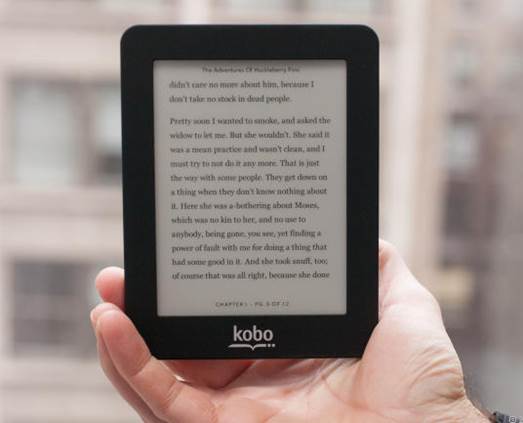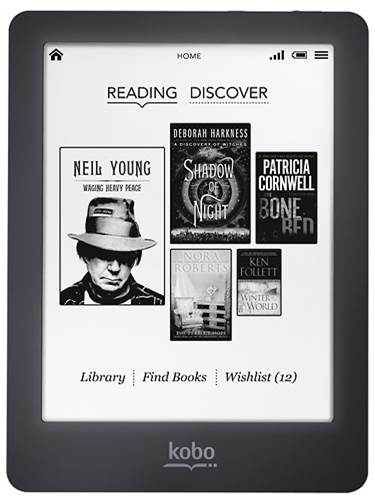While the manufacturers of smartphones and
tablets argue the screen sizes, the manufacturers of e-readers seem to agree
with the industry standard of 6 inch screens. It is the trend that Kobo is
trying to encourage at least. The company is adding its high-end devices with a
smaller model, the Kobo Mini 79 dollars which has a 5 inch screen and is
smaller and lighter. But how much difference does an inch really make? Is a
smaller device necessarily better than an e-reader? And with so many choices to
consume e-books like that, does the world really need the form factor changing
slightly? We will solve these hot questions.

Kobo
mini
Hardware
In the case of a 6 inch handheld device, 1
inch makes a lot of difference. Kobo called the Mini "the smallest and
lightest e-reader in the world" - a slightly dubious claim (basing on the
existence of Txtr Beagle), but of course it can make a claim to be one of the
most popular compact devices in the field with 4x5.2x0.4 inches size, compared
to the 6.4x4.5x0.39 inches Kobo Glo. With 4.7 ounces, it is lighter than the
6.5 ounces Touch. The result is that the device is hold even by small hands,
and to be put into pant and jacket pockets easily.

Kobo
mini (left) and Kindle (right)
Aesthetically, the Mini looks like a
miniature version of the Glo. All of the device body is covered by a soft
material which is usually used on phones, tablets and other mobile devices.
There are no buttons along the bezels of the device, which is slightly
unfortunate: like other Kobo devices, we cannot stop complaining about the lack
of physical page turn buttons. However, Kobo has succeeded in fitting the big
company logo just below the screen. There is nothing to say about the two straight
edges – at this time, Kobo abandoned the storage slot which can be expanded, so
you are stuck with the built-in 2GB (half of this is for the book storage). Of
course, the usual caveat applies here: you'll still have a lot of space left in
the cloud.

The
power switch and a light on the top
The above is a power switch and a light
which emits green light if the reader is powered on. On the bottom, you will
find a micro-USB port for charging. At the back, the normally diamond grid
pattern is retained with another logo in the middle. As the Glo, you can remove
the back of the device, but unlike a bigger reader, there is another level
(water pipe) below which should be unscrewed if you want to change the battery.
However, you can change the color covers ($20 per each cover) to "fix your
mood". We are feeling very sad after watching the Twilight. Luckily, there
is the type of rear cover for that. The company does not have any special
effort to make the Mini easier to hold, but with this size, it is not very
important, given how easy it is to wrap your hand around it.
Display

Kobo
mini’s display
Of course, in the front and middle is 5
inch screen. E Ink provides all the usual benefits compared with 5 inch screen
phone you are using, it's easy to read in sunlight, comfortable for the battery
and your eyes will not be burned. Kobo went back one generation to equip the
Mini avoiding Pearl technology for Vizplex V110 model. The contrast of the
older model is a step backwards, but most readers will probably not see a big
difference here, especially with the advanced setting of Kobo font, that allows
you to add effect and sharpness for the text (however, do use carefully, if you
add too much, the image quality becomes slightly blurred). You will see the
completely refreshing every 6 pages or so (similar to the Pearl screen), but in
our experience, that number is slightly different. We also see a lot of ghost
on the Mini – it is not the worst we have ever seen, but slightly worse than
competing reader.
And indeed, the most embarrassing part of
the whole experience is trying to adapt to the new size after years of using
the 6 inch reader. You will either squint a lot, or increase the text size and
do a lot page turning. It is not the end of the world, but if you are about to
stay all night and read the book "Gravity's Rainbow" or other very
fictitious books, it's best to use a larger reader.